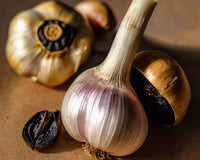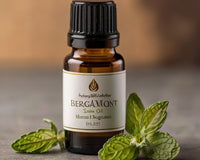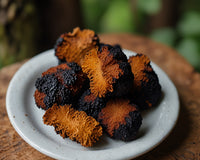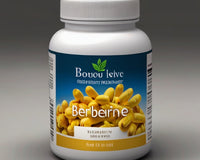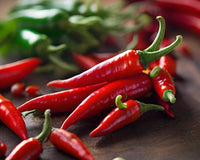Coriander, also known as coriander, coriander, salt beard, coriander or coriander (scientific name: Coriandrum sativum), is a feathery annual plant of the Parsley family (Umbelliferae). Some of its components can be used as Herbs are also used as spices. The plant is also known as Chinese parsley.
The plant is native to the Mediterranean and Middle East regions and is widely cultivated for culinary purposes around the world. Its dried fruits and seeds are used to flavor many foods, especially sausages, curries, Scandinavian pastries, liqueurs and sweets such as English preserves. Its delicate young leaves are called coriander and are widely used in Latin American, Indian and Chinese cuisine. Cilantro is an herb commonly used to flavor international dishes.
history
Records of coriander use date back to 5000 BC. The Romans used it to season bread. It was once used as an aromatic and carminative, but its only modern use in medicine is to mask the unpleasant taste and odor of medicines.
appearance
Coriander plants produce slender, hollow stems, 30 to 60 mm (1 to 2.5 inches) tall, with fragrant, second-pinnate leaves. The small flowers are pink or white and clustered in umbels. The fruit is a small dry ramous fruit consisting of two hemispherical fruits joined at the commissure or medial side. It appears as a single, smooth, nearly spherical fruit, about 5 mm (0.2 inches) in diameter. The yellow-brown fruit has a mild aroma that tastes like a combination of lemon peel and sage. The seeds contain 0.1% to 1% essential oil; its main component is corianderol.
Cilantro is characterized by its delicate, lacy leaves that resemble parsley. The leaves are bright green and grow on slender stems. The cilantro plant also produces small, round seeds that are used as a spice.
Flavor Profile
Cilantro leaves have a unique citrus flavor with a hint of parsley and a slightly peppery finish. The flavor of cilantro is fresh and herbaceous, making it a versatile herb that pairs well with a variety of ingredients.
culinary use
Coriander leaves are commonly used as a garnish or seasoning in various cuisines around the world. They add bright, fresh flavor to dishes such as soups, salads, curries, salsas, and stir-fries. Coriander leaves are also used in making pestos, chutneys and sauces.
Coriander seeds have a different flavor than the leaves. They have a warm, aromatic flavor with hints of citrus and spice. Coriander seeds are often used whole or ground as a spice in cooking, especially in Indian, Middle Eastern, and Asian cuisines. They are used to flavor curries, stews, marinades, pickles and baked goods.
nutritional value
Coriander leaves are low in calories but rich in essential nutrients. They are a good source of vitamins A, C and K, as well as folate, potassium and antioxidants. Coriander seeds also contain beneficial compounds such as flavonoids and phenolic acids, which have antioxidant and anti-inflammatory properties.
100 g of coriander leaves contains:
- 31 calories
- 2 grams carbohydrates
- 4 grams protein
- 0.7 g fat
- 146 mg calcium
- 5.3 mg iron
- 4.7 grams fiber
- 24 mg vitamin C
- 635 mg vitamin A
health benefits
May promote digestive and intestinal health
Cilantro may help improve digestion and relieve digestive problems such as bloating, gas, and indigestion. In one study, cilantro medication reduced symptoms of irritable bowel syndrome. One rat study found that coriander extract can increase appetite.
Can fight infection
Cilantro contains antibacterial compounds that can fight infections and foodborne illness. The dodecenal found in cilantro can fight bacteria that cause food poisoning, such as salmonella. Coriander seeds and other Indian spices can fight bacteria that cause urinary tract infections. Coriander oil shows potential in fighting foodborne illnesses and hospital-acquired infections.
Can protect brain health
Cilantro is known for its anti-inflammatory properties and has potential in preventing brain diseases such as Parkinson's disease, Alzheimer's disease, and multiple sclerosis. Studies show that cilantro extract can protect nerve cells, improve memory, and may help manage anxiety. However, it is important to note that further human studies are needed.
May help lower blood sugar
Hyperglycemia is a risk factor for type 2 diabetes. Coriander seeds, extracts, and oil may help lower blood sugar. However, caution is advised for people with low blood sugar or who are taking diabetes medications. Animal studies show that coriander seeds can increase the activity of enzymes that remove sugar from the blood. In rats, coriander seed extract lowered blood sugar and increased insulin release, similar to drug effects. The antioxidants in cilantro may help lower cholesterol levels and reduce the risk of heart disease.
Rich in immune-boosting antioxidants
Cilantro contains antioxidants that prevent free radical damage to cells. Research shows that these antioxidants have been shown to fight inflammation and may have anti-cancer, immune-boosting and neuroprotective effects. One study found that coriander seed extract can reduce inflammation and inhibit the growth of various cancer cells.
May be good for heart health
Some studies show that cilantro can reduce heart disease risk factors, such as high blood pressure and bad cholesterol levels. Cilantro extract acts as a diuretic, helping the body eliminate excess sodium and water, thereby lowering blood pressure. It also lowers cholesterol levels, with one study in mice showing a decrease in bad cholesterol and an increase in good cholesterol. Consuming spicy herbs like cilantro can help reduce sodium intake and improve heart health, especially for people who consume large amounts of cilantro compared to Western diets.
Can protect your skin
Cilantro has potential benefits for the skin. It may not be effective in treating diaper rash alone, but in combination with other compounds. Coriander extract's antioxidants protect against skin aging and damage caused by UVB radiation. While cilantro leaf juice can be used to treat acne and other skin conditions, there is limited research on its effectiveness.
blood sugar control
Some research suggests cilantro may help regulate blood sugar levels and improve insulin sensitivity.
cooking tips
- Use fresh cilantro leaves as a garnish for soups, salads, tortillas, and curries.
- Add chopped cilantro leaves to salsa, guacamole, or pico de gallo for extra flavor.
- Toast whole coriander seeds in a dry skillet and then grind them to enhance their flavor.
- Use ground coriander seeds as a spice for meats or as a seasoning for roasted vegetables.

